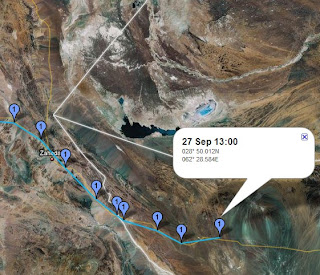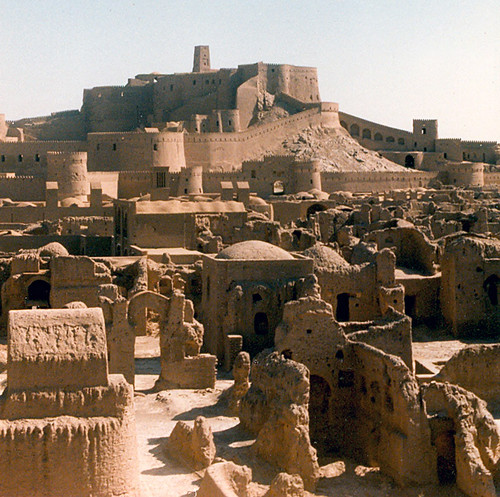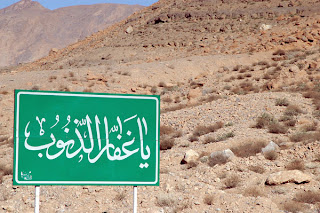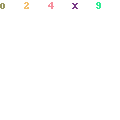 Mark is currently cycling through the district of Chagai, in the north west of the province of Pakistan. If you click on the hyperlink, you will link to a huge database of facts about the area. The section which deals with climate contains the following which goes a long way towards explaining the barrenness of the aerial photo....
Mark is currently cycling through the district of Chagai, in the north west of the province of Pakistan. If you click on the hyperlink, you will link to a huge database of facts about the area. The section which deals with climate contains the following which goes a long way towards explaining the barrenness of the aerial photo....The climate of the district ranges from extreme hot in summer to severe cold in winter. The difference between day and night temperature is considerable and the climatic conditions vary from area to area. Since the district falls outside the sphere of monsoon currents, the rainfall is irregular and scanty. The annual average rainfall in the district is 104 mm measured over the years 1993 - 1995. In the same period the average minimum temperature was 2.4 0C in January and maximum temperature 42.5 0C in July.
In these extreme climatic conditions even the camels must struggle
 This is another photo from the journal of the couple who cycled to India last year http://www.cyclingtoindia.com/ , much of the way along the same route as Mark is following. I have been reading extracts from their diary in the last couple of days and the parts which deal with this leg of their journey are very illuminating!
This is another photo from the journal of the couple who cycled to India last year http://www.cyclingtoindia.com/ , much of the way along the same route as Mark is following. I have been reading extracts from their diary in the last couple of days and the parts which deal with this leg of their journey are very illuminating!
According to his GPS tracker, Mark overnighted in Dalbandin..  It is hard to imagine how people sustain themselves in a town like this in the middle of a desert. With hardly a scrap of vegetation, there is clearly little cultivation possible. Having said that, there is some evidence that housing avoids the areas most prone to sheet wash when sudden rains in the surrounding hills will bring torrents of water through the town.
It is hard to imagine how people sustain themselves in a town like this in the middle of a desert. With hardly a scrap of vegetation, there is clearly little cultivation possible. Having said that, there is some evidence that housing avoids the areas most prone to sheet wash when sudden rains in the surrounding hills will bring torrents of water through the town. 
Dalbandin is one of the towns along the railway line through this part of Balochistan and a search on Flicker produced a photo of the station!
The search also produced an interesting menu from a 'hotel' in Dalbandin..
There is some choice for vegetarians though you may have to use a bit of imagination to work out what 'Aamlate' is!
Back on the road today, the going may be tough if this photo from another travel blog is to be believed
Earlier today, however, Mark passed close to the first real signs of cultivation in the region..The torrent course entering the view from the left obviously sustains cultivation in flooded fields on the surrounding flood plain. 
Just south of Mark's route today and rising steeply from the desert plain to a height of over 3000m are the Ras Koh mountains, infamously noted as the location of Pakistan's nuclear bomb tests in 1998.
 And finally (for today!) if proof were needed of the importance of water, albeit seasonal and infrequent, this view certainly has it!
And finally (for today!) if proof were needed of the importance of water, albeit seasonal and infrequent, this view certainly has it!






 The image above shows a 'meeting' of countries - Iran to the west, Afghanistan to the north east and Pakistan to the south east. The nature of that meeting is interesting - why would national borders be drawn in such a way? It isn't at all clear until you consult an atlas and find that the 'hub' of the frontiers is on the highest mountain in the area and so is a logical choice despite appearances.
The image above shows a 'meeting' of countries - Iran to the west, Afghanistan to the north east and Pakistan to the south east. The nature of that meeting is interesting - why would national borders be drawn in such a way? It isn't at all clear until you consult an atlas and find that the 'hub' of the frontiers is on the highest mountain in the area and so is a logical choice despite appearances.







 The change of hue is so subtle it reminds me of a shade card! However, there is more in the view than just colourful rocks.....
The change of hue is so subtle it reminds me of a shade card! However, there is more in the view than just colourful rocks.....
 From the air it looks much like many of the other settlements on the edge of the desert which he has travelled through in the last couple of days. Like Rafsanjan and Kerman, it is located where a seasonal river provides enough water to support irrigation and cultivation. Unlike Rafsanjan and Kerman, however, it is not its agricultural commodities or Persian carpets for which it is noted but rather the huge death toll which followed an earthquake there on 26th December 2003. A closer look at the area from the air reveals clear evidence of the disaster...
From the air it looks much like many of the other settlements on the edge of the desert which he has travelled through in the last couple of days. Like Rafsanjan and Kerman, it is located where a seasonal river provides enough water to support irrigation and cultivation. Unlike Rafsanjan and Kerman, however, it is not its agricultural commodities or Persian carpets for which it is noted but rather the huge death toll which followed an earthquake there on 26th December 2003. A closer look at the area from the air reveals clear evidence of the disaster... ..temporary shelters (probably tents) surrounded by buildings which lie destroyed. This imagery is probably a couple of years old but judging from the extent of the destruction visible in the city, it is doubtful if much reconstruction will yet have been achieved.
..temporary shelters (probably tents) surrounded by buildings which lie destroyed. This imagery is probably a couple of years old but judging from the extent of the destruction visible in the city, it is doubtful if much reconstruction will yet have been achieved.

 To the west are these stripes . It is really difficult to work out what you are looking at here but stripes in deserts are not uncommon and often are associated with
To the west are these stripes . It is really difficult to work out what you are looking at here but stripes in deserts are not uncommon and often are associated with 

 And finally.... a bit of trawling produced this image of the Dasht e Lut
And finally.... a bit of trawling produced this image of the Dasht e Lut
 The ribbons of green stand out clearly in this otherwise arid landscape. To understand how significant they are, you need to bear in mind that this area IS a desert - with average monthly totals of precipitaion in mm as follows (Jan to Dec in Kerman)
The ribbons of green stand out clearly in this otherwise arid landscape. To understand how significant they are, you need to bear in mind that this area IS a desert - with average monthly totals of precipitaion in mm as follows (Jan to Dec in Kerman)



 The aerial view shows Mark heading south from Yazd with some high terrain to his west. I happened to look at the atlas and saw that this high terrain is in fact a mountain peak called Shir Kuh
The aerial view shows Mark heading south from Yazd with some high terrain to his west. I happened to look at the atlas and saw that this high terrain is in fact a mountain peak called Shir Kuh 




 Investigation reveals that this area is right on the edge of the 400,000 hectare
Investigation reveals that this area is right on the edge of the 400,000 hectare  One of the striking features of the photo is that despite the current aridity of the area (it receives only around 150mm of rain per year), there has clearly been a lot of water around at some time in the past to create these 'fans' of material which have been washed down from the high ground in the middle of the national park.
One of the striking features of the photo is that despite the current aridity of the area (it receives only around 150mm of rain per year), there has clearly been a lot of water around at some time in the past to create these 'fans' of material which have been washed down from the high ground in the middle of the national park.



 Surprisingly, it would seem that most of Iran's population live in the mountainous areas of the north and west. The reason is that to the east is a huge salt desert plateau called
Surprisingly, it would seem that most of Iran's population live in the mountainous areas of the north and west. The reason is that to the east is a huge salt desert plateau called 
 Mark is now skirting the Great Salt Desert on its western edge and has today passed the city of
Mark is now skirting the Great Salt Desert on its western edge and has today passed the city of 

